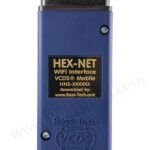The Audi RS7, a powerhouse of performance and luxury, offers a plethora of customization options. Delving into VCDS coding opens up a world of possibilities to tailor your RS7 to your exact preferences. This article explores specific byte data related to Dynamic Chassis Control (DCC) and other modules in the RS7, offering insights into potential coding adjustments.
Decoding the Data Bytes: DCC and Beyond
Analyzing raw data from VCDS scans can reveal valuable information about your RS7’s configuration. Let’s break down the provided byte data:
Byte 0: DCC Presence Indicator
- Values of
61,62, or63indicate the presence of various modules. - Notably, a value of
63appears exclusively in RS7s equipped with DCC. This byte serves as a quick identifier for DCC-equipped vehicles.
Byte 1: Unique Configuration
- A value of
BFwas observed in a specific RS7. Further investigation is needed to determine the significance of this unique value and its potential relation to specific vehicle configurations or modifications.
Byte 2: DCC vs. Non-DCC Discrepancy
- Lower values (
11or13) in this byte are associated with DCC-equipped RS7s. - Higher values (e.g.,
53orDB) are observed in non-DCC vehicles. This distinction highlights a clear correlation between Byte 2 values and the presence of DCC. The specific bit patterns within these values might hold clues to individual DCC settings.
Bytes 4-7: Inversion Pattern
- Bytes 4, 5, and 6 exhibit an interesting relationship with Bytes 0, 1, and 2, respectively. Each of these bytes holds the inverted value of its counterpart. For instance,
C0(hexadecimal) translates to11000000(binary), while its inverted value03(hexadecimal) is00000011(binary). - This inversion pattern suggests a potential checksum or error-checking mechanism within the data structure.
Byte 8: Further Differentiation
- While
4Bis the prevalent value in Byte 8 across most RS7s, a value ofDBwas observed in one instance. This variation warrants further analysis to understand its potential significance. It could indicate different hardware or software versions.
Exploring Adaptation Channels in ABS Module
The ABS module might hold further clues related to DCC configuration. Examining adaptation channels within this module could reveal adjustable parameters for fine-tuning DCC behavior. Look for specific channels related to suspension settings, damping control, or driving modes. Experimenting with these channels might unlock hidden customization potential. Remember to document any changes made and proceed with caution.
Conclusion: Unlocking Your RS7’s True Potential with VCDS
By carefully analyzing VCDS data and exploring adaptation channels, RS7 owners can unlock a new level of customization. Understanding the significance of each byte and its potential impact on vehicle behavior is crucial for successful coding. While this analysis provides a starting point, further research and experimentation are encouraged to fully harness the power of VCDS coding in your Audi RS7. Always remember to back up your original coding before making any changes.

